The process is based upon the fact that color vision is based on the three primary colors red, green and blue. These are called the "additive" primaries, which are different from the "subtractive" primaries used in printing: yellow, magenta (purple) and cyan (blue-green).
The Lumiere Autochrome plates are coated with a filter layer consisting of red, green and blue starch grains.
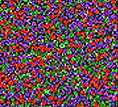
These starch grains are approx. 1/40 mm (1/1000 inch) in diameter. They act as tiny color filters during the exposure of the plate. The image is reversal processed, yielding a positive image. When the plate is seen in transmitted light, the three-color filter layer re-creates the color image. However, due to the filters, the image is very dark.
The same starch-grain process, called "Lumiere Cinecolor", was used for motion pictures, too, in the 1920's. Other movie processes using the same principle were also developed, for instance Dufaycolor in the 1930's. In the 1980's Polaroid introduced a system with a linear tri-color filter layer in their "Polavision" instant 8-mm process. For more info on early motion picture color processes, as well as widescreen systems, see this excellent site: The American Widescreen Museum
I own a couple of boxes of Autochrome plates:
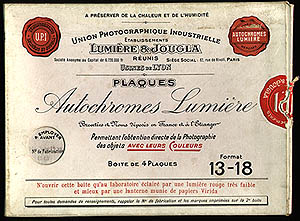
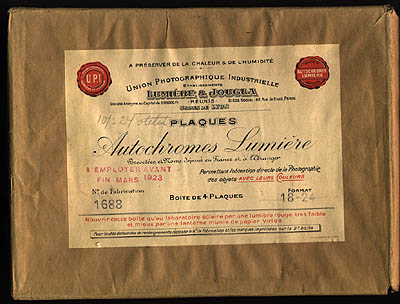
The text on the boxes state that the plates should be used before March 1920, and March 1923, respectively.
Since the warranty label states the following -
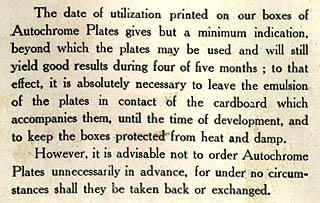
- I really have not contemplated trying to use any of these plates...
Does anybody know what value these boxes might have? The smaller one (13x18 cm) contains one unused plate, the bigger box (18x24 cm) contains three.
Any info you might have is appreciated!
I own an old book, with original photo prints pasted onto special cardboard pages. I believe the photos are albumin prints. They're sepia toned, VERY sharp and detailed. I guess they are contact prints from 4x5 glass negatives...
The book is named "Summering in Colorado", published in 1874 by Richards & Co, Denver. No author is given, but the photos are credited to J. Collier.
Here's the beginning of one chapter, "Colorado Springs and Garden of the Gods":
And here are a few closeups of the albumin prints:
As you can see in the last image, which is a 4x enlargement of the original, the sharpness and quality of these prints are fantastic! The book contains altogether 10 of these photos.
I'm also fortunate to own an old German photo wholesaler's catalog:
This book, printed in 1907, has over 300 pages, and is filled with the most exquisite woddcuts of photographic equipment from the early 1900's:
This is a stereo adapter for glass plate cameras...
And this is a viewer used for those old-fashioned stero postcards!
A 35 mm film projector. The movement, vhich is hand-cranked, has a beater mechanism, which was used before the Maltese cross became the standard method of intermittent film movement. Don't the arc light's electrical connections look really safe? ;-)
Does anybody have any info on the Otto Spitzer Co.?
This is a little treasure my father once gave me:
It has a Rodenstock Eurynar 1:4,5 f=13.5 cm lens, a Compur shutter with 1 - 1/200 sec exposures, plus B and T, double extension bellows, magazines for glass plates and pack film. I have been unable to date it exactly. Any info? NEW INFO:
Rodenstock lens numbers:
Compur shutter numbering:
Thanks to this info, I was able to determine that the camera probably was manufactured in 1926 or so (usually about a year after the lens & shutter were made).
Any and all feedback appreciated, my email: animato@sci.fi
Back to my home page: http://www.sci.fi/~animato

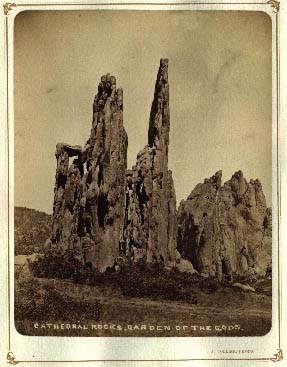

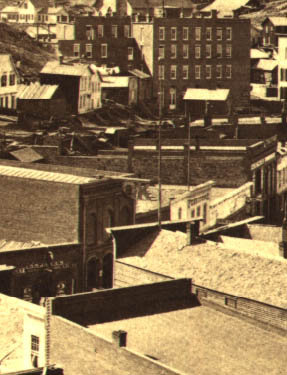




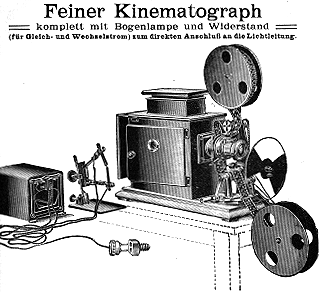
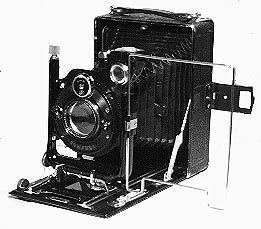
Jarmo Laine, a Finnish camera collector, kindly provided me with this list for dating shutters and lenses:
1910 50000
1920 200000
1930 400000
1935 700000
1938 900000
1940 950000
1920 450000
1922 500000
1925 600000
1926 750000
1927 850000
1928 950000
1929 1000000
1930 1150000
1931 1500000
1932 1800000
1933 2250000
1934 2700000
1935 3200000
1939 5400000
Thanks, Jarmo!